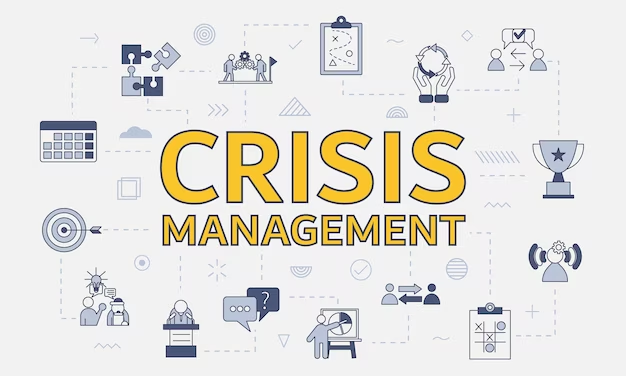
In today’s digital landscape, social media has transformed into a double-edged sword for brands and individuals alike. While it offers unparalleled opportunities for engagement and brand building, it can also amplify crises at an alarming speed. The challenge of maintaining a social media presence during crisis management is a pressing concern for many organizations. This blog post explores the intricacies of crisis management in the realm of social media, the unique challenges faced, and how services like those offered by Sociobo can help brands navigate these turbulent waters.
The Role of Social Media in Crisis Management
Social media has become an indispensable tool for crisis management, providing real-time communication capabilities that can either mitigate or exacerbate a situation. According to a report by Forbes, effective crisis management on social platforms requires a strategic approach that includes assigning roles, creating dedicated hashtags, and actively engaging with audiences to maintain control of the narrative.

Real-Time Social Media Monitoring
One of the cornerstones of effective crisis management is real-time social media monitoring. Organizations must leverage advanced tools and strategies to quickly identify, assess, and respond to potential crises as they unfold. The benefits of real-time monitoring are manifold, allowing crisis management teams to gauge the speed at which a crisis escalates and make informed decisions to mitigate potential damage to brand reputation.
To implement a robust real-time social media monitoring strategy, organizations should consider the following:
- Utilize Comprehensive Management Platforms: Platforms like Sprout Social offer social listening and real-time analytics features that can help organizations stay ahead of potential crises.
- Employ Specialized Tools: Tools such as Talkwalker and Hootsuite provide real-time updates and allow organizations to track public sentiment.
- Set Up Automated Alerts: Establish automated alerts for specific keywords, hashtags, or sudden spikes in mentions related to the brand or potential crisis situations.
- Analyze Social Media Metrics: Regularly assess customer feedback trends, campaign effectiveness, and overall brand sentiment.
- Integrate AI-Powered Tools: Use AI tools to process large volumes of data quickly and identify emerging patterns or potential threats.
By implementing a robust real-time monitoring strategy, organizations can significantly enhance their ability to detect and manage crises early, potentially averting major reputational damage.
Handling Misinformation and Rumors
In the age of social media, misinformation and rumors can spread like wildfire, posing a significant threat to an organization’s reputation. The first step in addressing misinformation is to implement a solid social media listening strategy. This allows organizations to detect rumors early and respond promptly with factual information.
When confronted with misinformation, organizations should:
- Respond Promptly: Counter false claims with accurate, verifiable information.
- Provide Credible Sources: Use links to credible sources or expert opinions to support the organization’s stance.
- Share Positive Stories: Balance negative narratives by sharing positive stories and factual content.
- Implement a Comprehensive Playbook: Develop a playbook for incident response to misinformation.
By taking these steps, organizations can protect their brand reputation and maintain stakeholder trust during a crisis.
Crafting Empathetic Crisis Responses
Empathy plays a crucial role in crisis communication. Crafting empathetic responses on social media is essential for maintaining trust and managing public perception. Empathetic communication is built on three key pillars: active listening, emotional understanding, and responsive expression.
To craft empathetic crisis responses, organizations should:
- Acknowledge the Situation Promptly: Stakeholders expect leaders to care, and an expression of empathy is a necessary first step.
- Listen Actively: Use social media listening tools to gauge public sentiment and identify key issues.
- Validate Emotions: Recognize and validate the feelings of those affected by the crisis.
- Communicate with Transparency: Be open and honest about the situation, even if all the facts are not yet known.
- Use a Human Tone: Avoid corporate jargon and speak in a more relatable voice.
- Offer Support and Resources: Provide practical assistance or information that can help those affected by the crisis.
- Follow Up Consistently: Engage with your audience throughout the crisis and its aftermath.
- Train Your Team: Ensure that all team members involved in crisis communication are trained in empathetic communication techniques.
By incorporating these strategies, organizations can create crisis responses that resonate with their audience on an emotional level. Empathetic communication not only helps to mitigate negative impacts but also strengthens relationships with stakeholders in the long term.
The Challenges of Maintaining Social Media Presence
Despite the advantages of social media, maintaining a consistent presence during a crisis poses unique challenges. Organizations often grapple with the fear of backlash, negative comments, and the overwhelming nature of public scrutiny.

Balancing Transparency and Control
One of the most significant challenges is balancing transparency with control over the narrative. In a crisis, stakeholders expect timely and honest communication. However, organizations must also be cautious about the information they release. Missteps can lead to further complications, including misinterpretations of intent or the spread of misinformation.
The Pressure to Respond Quickly
The fast-paced nature of social media means that organizations must respond quickly to emerging crises. This urgency can lead to hasty decisions that may not align with the organization’s values or long-term strategy. It’s crucial to have a well-defined crisis communication plan that allows for rapid responses while ensuring that all messaging aligns with the brand’s core values.
Managing Public Perception
Public perception can shift rapidly during a crisis. A single negative comment can lead to a cascade of negative sentiment, making it challenging to manage the overall narrative. Organizations must actively engage with their audience, addressing concerns and correcting misinformation while remaining true to their brand identity.
How Sociobo Can Help
In this turbulent environment, services like Sociobo can play a pivotal role in helping individuals and businesses maintain their social media presence during crisis management. By leveraging the concept of social proof aggregation, Sociobo enhances brand visibility and authority, making it easier for organizations to attract genuine engagement and followers.

The Power of Social Proof
Social proof is a psychological phenomenon where individuals look to the actions and beliefs of others to guide their own behavior. In social media, this is manifested through metrics such as followers, likes, comments, and shares. High engagement metrics suggest credibility and popularity, which can attract more genuine engagement.
Sociobo’s unique approach focuses on providing aggregated followers—high-quality bot accounts that are active and engaged with your content. Unlike fake followers, which can harm engagement rates and reduce visibility, aggregated followers enhance the perceived credibility and influence of a social media profile. This can be particularly beneficial during a crisis, as it helps maintain a positive brand image and encourages real followers to engage.
Customized Experience Packages
Sociobo offers customized experience packages tailored to various social media platforms, including Instagram, TikTok, YouTube, Facebook, and Spotify. By boosting perceived credibility through aggregated followers, organizations can effectively manage their social media presence, even in challenging times.
Enhancing Crisis Communication
Through its services, Sociobo enables organizations to enhance their crisis communication efforts. By increasing engagement metrics, brands can more effectively disseminate their messages and control the narrative during a crisis. This proactive approach can help organizations maintain trust and credibility with their audience.
Taking Action
The struggle of maintaining a social media presence during crisis management is a complex challenge that requires a strategic approach. Organizations must navigate the fast-paced nature of social media, manage public perception, and respond empathetically to stakeholders.

By implementing real-time monitoring strategies, addressing misinformation, and crafting empathetic responses, organizations can effectively manage crises and protect their brand reputation. Services like Sociobo provide valuable support in this endeavor, helping brands enhance their visibility and authority on social media platforms.
As you navigate the complexities of social media crisis management, consider how Sociobo can assist you in building a robust social media presence that withstands the test of time. Explore our services today at Sociobo.com and take the first step towards enhancing your brand’s credibility and influence in the digital landscape.
In a world where perception is reality, let Sociobo help you shape yours.






 We're Here to Help 24/7!
We're Here to Help 24/7!  Get Instant Help on
Get Instant Help on 
No comment yet, add your voice below!